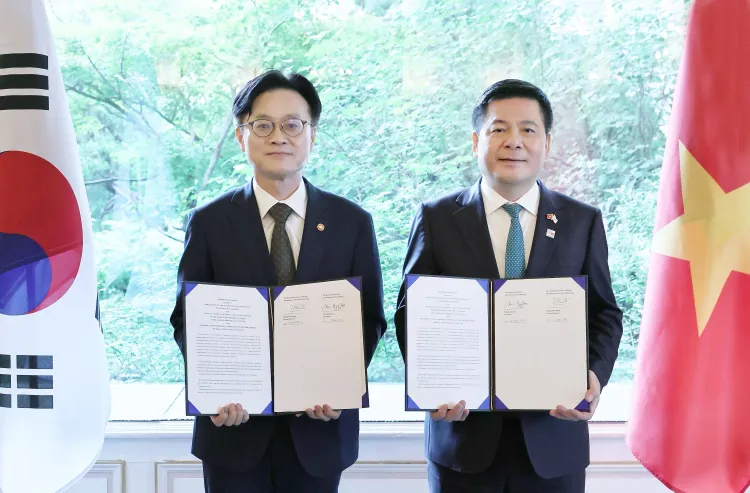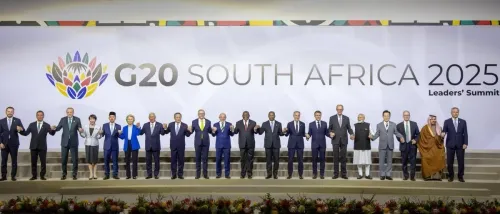How Are South Korea and Vietnam Collaborating on Energy and Nuclear Power?

Synopsis
Key Takeaways
- South Korea and Vietnam are enhancing energy sector cooperation.
- Focus areas include renewable energy and nuclear power.
- MOUs signed for joint projects and workforce development.
- Targeting $150 billion in bilateral trade by 2030.
- Significant investment in critical mineral technology.
Seoul, Aug 11 (NationPress) South Korea and Vietnam are set to strengthen their collaborative efforts in the energy sector, focusing on both renewable energy and nuclear power, as officials from Seoul revealed on Monday. The two nations' industry ministries have formalized this commitment by signing a memorandum of understanding (MOU) aimed at advancing joint initiatives in renewable sources, including solar, wind, and energy storage systems, as stated by the Ministry of Trade, Industry and Energy in Seoul.
Furthermore, the Korea Electric Power Corp. from South Korea and Petrovietnam (PVN), a state-owned company from Vietnam, have also inked an MOU to develop a skilled workforce for the nuclear sector in Vietnam, which has plans to construct four nuclear reactors by 2035.
These MOUs were finalized in the wake of a summit held in Seoul between South Korean President Lee Jae Myung and Vietnam's top leader To Lam. During their discussions, the leaders reaffirmed their commitment to enhance the Comprehensive Strategic Partnership established three years ago, which encompasses trade, security, technology, and cultural exchanges, while pledging to amplify bilateral trade to reach $150 billion by 2030.
Before the summit, Korean Industry Minister Kim Jung-kwan met with his Vietnamese counterpart Nguyen Hong Dien to discuss expanding supply chain collaborations, as reported by Kim's office. As part of this agreement, Seoul will initiate a five-year official development assistance (ODA) program aimed at establishing a critical mineral supply chain technology center in Vietnam, according to Yonhap news agency.
The South Korean government plans to invest a total of 16.6 billion won ($12 million) towards acquiring equipment for the smelting of critical minerals in Vietnam, alongside providing technical guidance and supporting human resource development.
Currently, Vietnam ranks as the holder of the sixth-largest rare earth reserve in the world, as well as the third-largest bauxite reserve, the fourth-largest tungsten reserve, and the seventh-largest graphite reserve.









